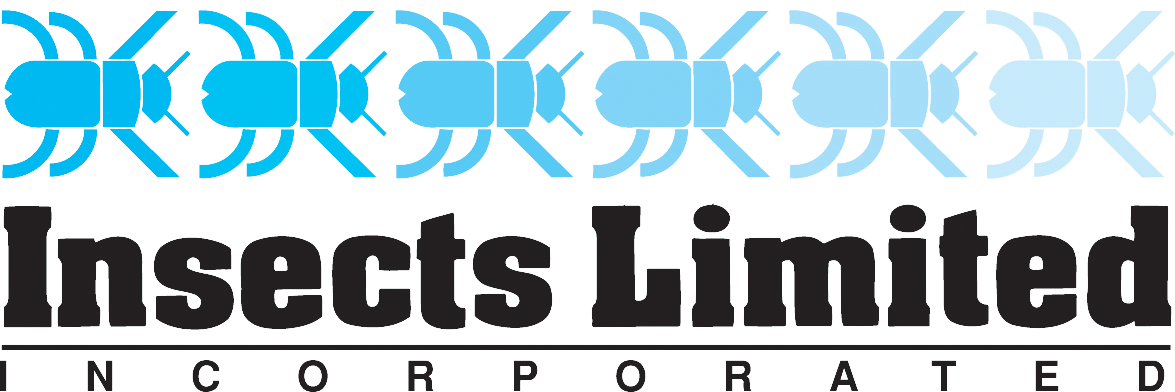Controlling Insects without Pesticides
Stored product infesting insects (SPI’s) can be a real nuisance in grocery, health food, and pet stores as well as in our pantries at home. Because of the kinds of items stored in these areas, SPI’s can thrive and quickly get out of control if left alone. Several insect control strategies can be applied to prevent these kinds of problems and to get control of them after they have taken hold.
Prevention
One way to prevent insect problems from taking hold is by using good sanitation techniques. Sanitation involves keeping the area clean. It is easy for spillage to get into nooks and crannies such as underneath shelves. These small areas can harbor infestations since SPI’s are so small and can survive on a small amount of food. A thorough cleaning will help prevent insect infestations. Another aspect of sanitation that can aid in infestation prevention is trash removal. Emptying the trash can daily is a simple way to prevent pest problems.
Inspection is another tool that can be used to manage insect populations and prevent infestations. Inspection simply means to take a close look. Take a close look at any items that might be subject to insect infestations. These include: flour, cereal, grain products, dried fruits, spices, and pet foods. Stored product insects can also infest nonfood products such as dried flowers. All such items should be inspected. A thorough inspection of the storage areas should also be completed because hidden infestations could be found in those areas.
Monitoring is the third way to prevent and locate outbreaks. By the use of insect monitoring, one can find an infestation as it begins and can get control of it before it becomes a severe problem. Monitoring can be with the use of pheromone traps or plain sticky traps called "blunder traps". The most effective method is to use both in combination. Pheromone traps are species specific and must be chosen according to the target insect. Blunder traps are good in that although they do not target a specific insect, they can give a sampling of all insects in the area. This is particularly useful for insects for which there is no pheromone trap available. If used properly, these traps can be used to pinpoint the exact location of an infestation.
Control
There are several non-pesticidal techniques that can be used to control an infestation once it has been located. These include discarding infested product and using extremes of temperature. Many times the easiest way to get rid of an infestation is to throw it away. This is particularly easy if the infestation is isolated. For example, if the only infestation is in a box of cereal, it is easiest to simply throw it away. Many items can also be frozen or heated. As a general rule, freezing at 0º F for 7 days should achieve 100% control of all stages. It is important, however to remember that condensation can occur during the thawing process. Wrapping items in tightly sealed plastic bags can help reduce this problem. The general rule for heating is 120º F for 16-24 hours to achieve control.
Using these techniques will help keep your insect problems under control. 1998 A. Resener
Insect and Rodent Control Items for the Organic Food Industry
Pyganic
Pyrethrins
EcoExempt IC—Insecticide Concentrate (USDA NOP Compliant)
EcoExempt G—Granular Insecticide (USDA NOP Compliant)
EcoExempt D—Dust Insecticide (USDA NOP Compliant)
EcoExempt HC—Herbicide Concentrate (USDA NOP Compliant)
EcoExempt Yellow Jacket—Contact Insecticide (USDA NOP Compliant)
Dipel (Bacillus thuringensis)
Predator Insects
Sterling Disposable Fly Bags
Musca Stick Glue Fly Traps
Smart Light Fly Light w/Glue Board
Gilbert Fly Light w/Glue Board
Vector Fly Light w/Glue Board
UVA Meter—Checks output of fly light bulbs
Diatomaceous Earth—Protect-It
Rodent Bait Stations—Locking
Non-Toxic Monitoring Bait
Repeating Mouse Traps—Tin Cat, Repeater, ProKetch
Snap Traps Glue Boards and Covers Copper Mesh—Stuff-It
Fork Lift Covers—For Rodent Traps
Bird Netting Bird Spikes Live Traps—Pigeon, Sparrow, Grackle, etc.
Scare Eye Balloons
Plastic Owls
Sonic Propane Cannons
Streamlight Rechargeable Flashlights—Lifetime Guaranteed
Orange TKO Cleanser
Carbon Dioxide Fumigation
These products are recognized as organic approved by various certification organizations, but not by all. Government USDA NOP certification does not mean that your particular certifier will recognize the product as organic. There is not a general consensus as yet. At this time there is a lot of work being done at Purdue University on ozone as a fumigant and this may prove to be a viable fumigation option. We currently utilize carbon dioxide as our organic fumigant.
